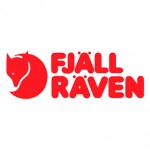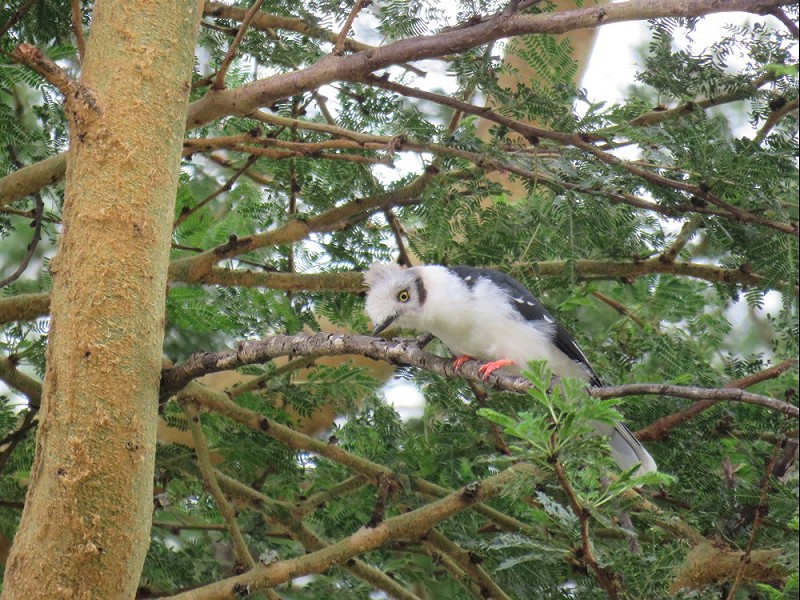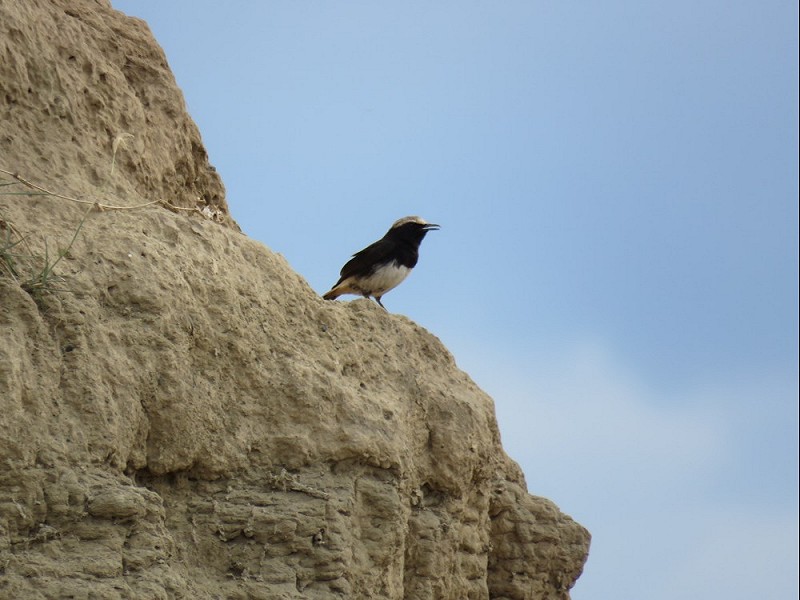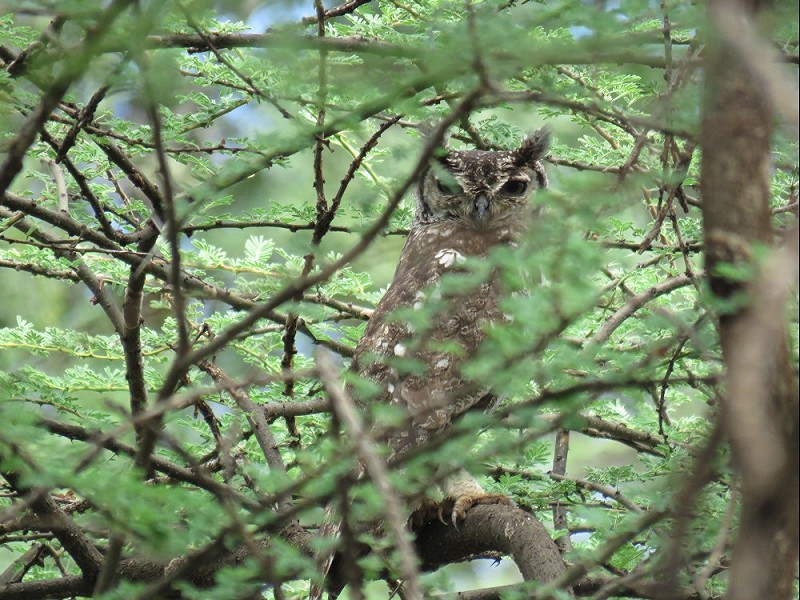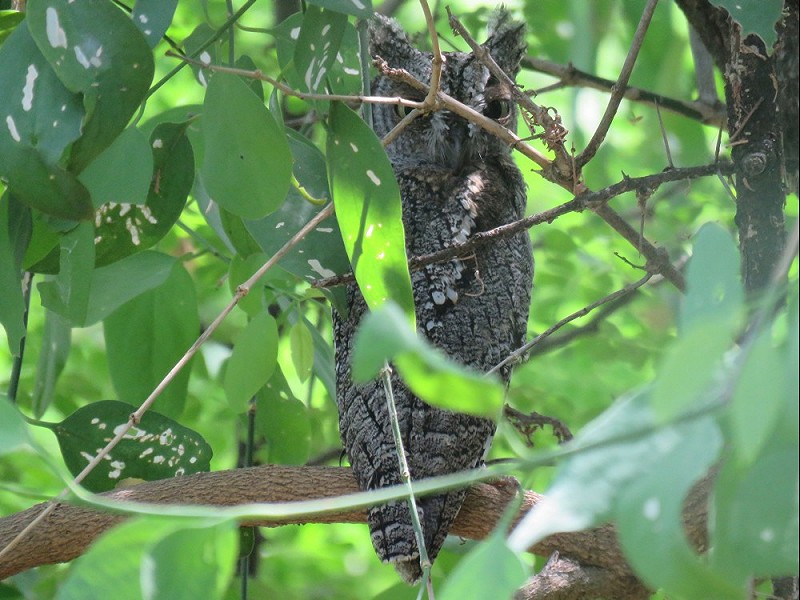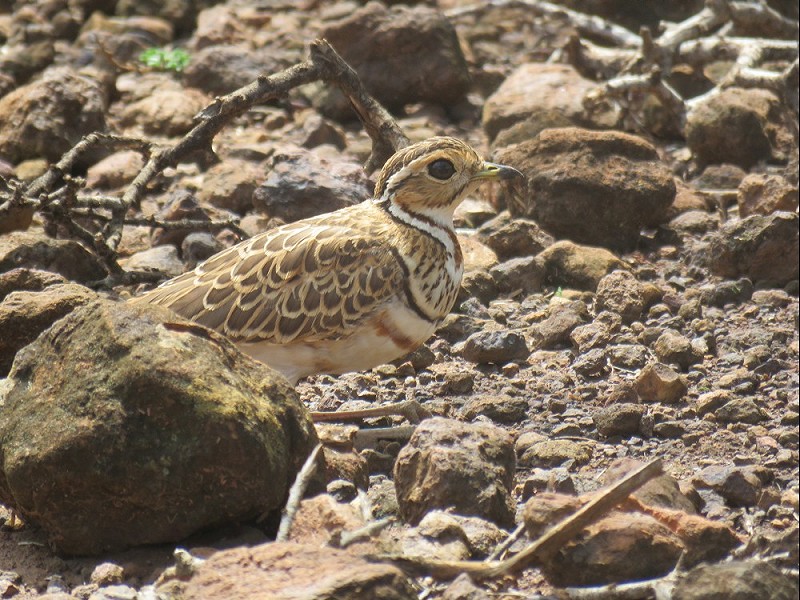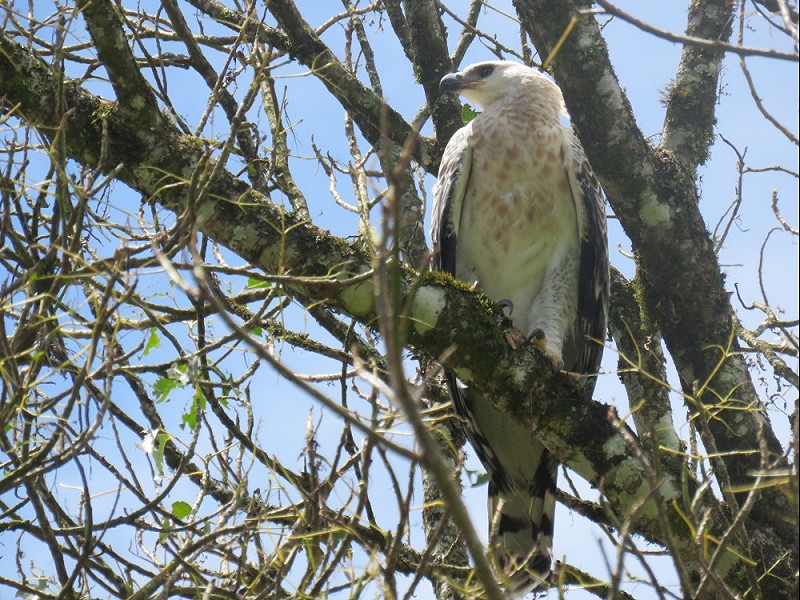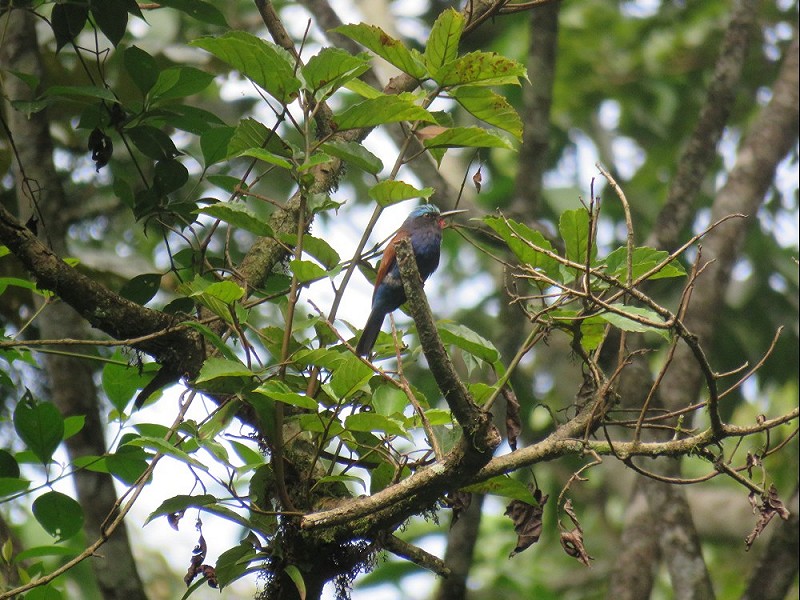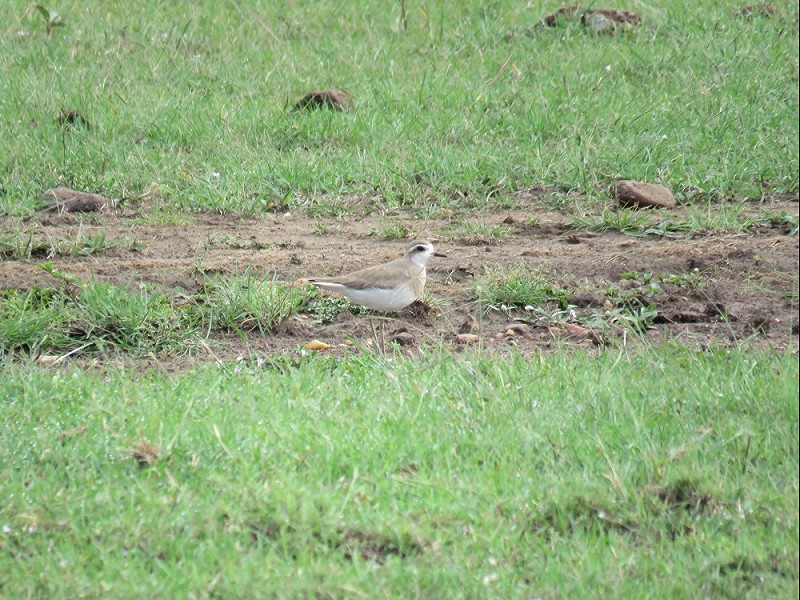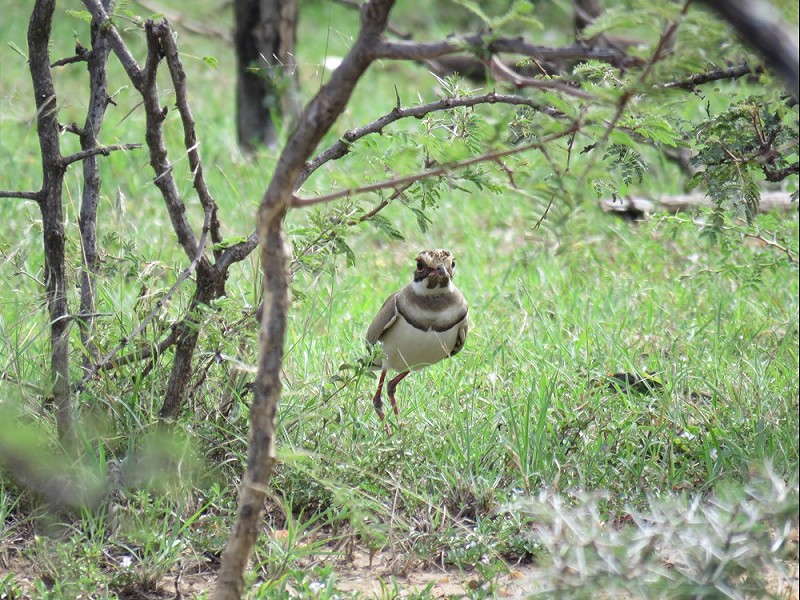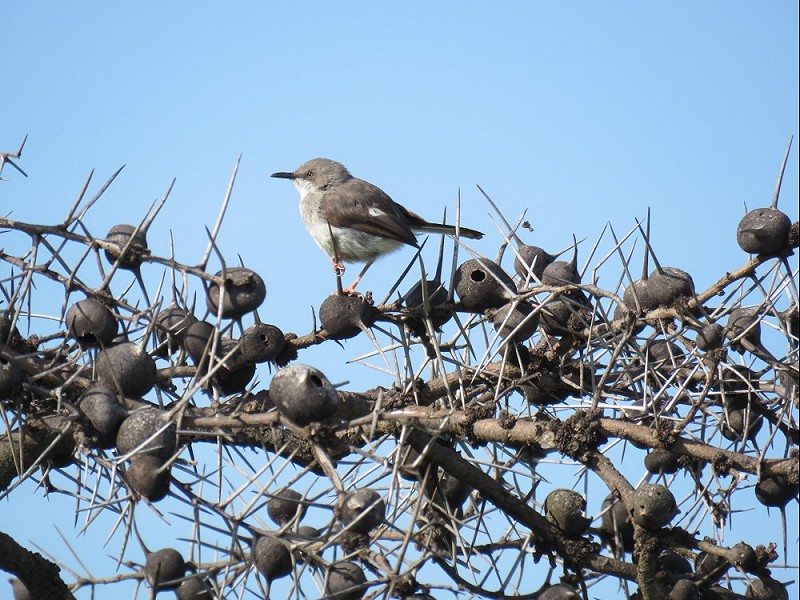Arjan's Biggest Year
In 2016 I will attempt the ultimate in global birding, to break the world record in birdwatching, this involves observing more than 6000 species in a single year!
Like my predecessor Noah Strycker I will count heard-only birds, but I will differentiate between heard-only- and seen species to make sure my list stays comparable.
During my 'Biggest Year' I will raise money for the groundbreaking Birdlife Preventing Extinctions Programme in a collaboration with Vogelbescherming Nederland and the Dutch Birding Association. This programme aims to prevent the extinction of all globally threatened bird species by applying an active, innovative and highly effective methodology.
Arjan's Biggest Year is supported by:
April 18 - 23
25 april 2016 · Arjan Dwarshuis · 6814 × bekeken
PLEASE MAKE A DONATION NOW!
world.observation.org/arjan
www.arjandwarshuis.com/#biggestyear
April 18th BIRDING THE SHORES OF LAKE NAKURU
Since Lake Nakuru is renowned for boasting a very high species list and a potentially huge day count, we decided to make it into a big day. How many species exactly would we be able to record between 06:30 AM and 06:30 PM? We had two big targets, the rare Grey-crested Helmet-shrike – which hybridizes with the far commoner White-crested Helmet-shrike, a serious problem for this species – and the Schalow’s Wheatear (considered a subspecies of Abyssinian Wheatear by some).
(By the way a Red-chested Owlet just started calling while I’m writing this :-))
Lake Nakuru NP is currently experiencing some major changes in habitat around the lake due to higher water levels. This has resulted in the loss of lakeside acacia woodland – the prime habitat of Grey-crested Helmet-shrike – and the almost complete disappearance of Lesser Flamingo, formally the flagship species of the park. It is still very good and as we drove into the park it became evident that our Big Day could indeed turn into a huge day.
The acacias around the lake shore were Cuckoo bonanza and at one point we recorded Eurasian-, African-, Red-chested-, Black-, Klaas’s- and Diederik Cuckoo in just 5 minutes time. Other good birds were Verraux’s Eagle Owl, Little Rock-thrush, Amur Falcon, Southern Ground-Hornbill and many White-fronted Bee-eaters, in addition to large numbers of migrants (predominantly waders).
The star birds had to wait till after lunch. First we found two separate Pallid Honeyguides and while watching one of these birds suddenly a flock of 3 Helmet-shrikes dropped in. Two were evidently hybrids, but one bird looked good! I managed to take a couple of photographs and indeed we had found a nice pure Grey-crested Helmet-shrike!
Schalow’s Wheatear proved a piece of cake around the quarry at the far end of the park and other good birds were African Black Duck, White-headed Barbet and Black-bellied Bustard.
At 6:31 PM we passed the exit gate of Lake Nakuru and we clocked out with no less than 170 species! My Biggest day ever!
April 19th TO BARINGO AND THROUGH THE KERIO VALLEY
After breakfast we drove to Lake Baringo where we had planned a full day of birding and to spend the night there. We arrived at 8:30 AM and since it had just rained it was still teaming with birdlife.
Upon arrival we were met by Wilson, who would take us for a daytime nightbirding session. How does a daytime nightbirding session work? Well, if you know stakeouts for roosting nightbirds you can walk right up to them ... :-)
Our first target was Greyish Eagle-Owl. We walked up to a pair, but when I got one in the scope – the other one was hiding somewhere – it turned out to be a hybrid Spotted- x Greyish Eagle Owl, so I couldn’t count it for my Biggest Year list.
Next up was a fantastic pair of Northern White-faced Owls that – typically for a roosting owl – showed very well!
This went well! We continued to a patch of dry woodland where Wilson pointed under a bush and there were three very showy Three-banded Coursers, one of the most stunning nocturnal waders out there.
We finished the tour with a cracking pair of African Scops-Owls while a Pearl Spotted Owlet called in the background. Not bad at all, four species of Owls during a half an hours walk in the heat of the day!
Before lunch we took care of the last two important targets, White-billed Buffalo-Weaver and Northern Masked Weaver and because we saw all the Baringo Targets before noon, we decided not to spend the night in Baringo, but instead to push on through the Kerio valley to Kakamega forest. This brilliant plan meant that we would have a full day instead of half a day at this fantastic birding site.
Now there was one problem, we had to find the three Kerio Valley specialties in the heat of the day.
We started with White-crested Turaco. I thought our changes would be slim, but against all odds we quickly found a pair at Joseph’s stakeout in a large riverside fig tree, what an absolutely stunning Turaco!
Next up was the sometimes very tricky Gambaga Flycatcher, but not this time! Before we had stepped out of the car I found a bird perched in the crown of a roadside acacia.
The Boran Cisticola proved the easiest with about 10 birds at the Kerio viewpoint. Three out of three in the bag!
We finally arrived at the Kakamega Blue-shouldered Guesthouse just after dark and while I was preparing dinner a Red-chested Owlet started calling in the background!
April 20th MEGA KAKAMEGA
I’ve been to Kakamega Forest before so I already knew that this remnant stretch of Congo lowland forest offers spectacular birding, but I could have never expected the day that lie ahead…
At first light we started birding along the main road that cuts through the forest and as expected it was hard to keep up with all the new species. We found goodies like Dusky Tit, Yellow-spotted-, Yellow-billed- and Hair-breasted Barbet, Pink-footed Puffback, the treecreeper-like Kakamega Greenbul, White-tailed Ant-Thrush, Jameson’s Wattle-eye and Red-headed Bluebill and we heard a Buff-spotted Flufftail, but best of all was a pair of Chapin’s Flycatcher hawking for insects in the canopy. It took us a while to find the globally threatened Turner’s Eremomela, but once we did we enjoyed splendid scope views.
We did our late morning birding around the Rondo Rest house. Here we quickly found a calling Thick-billed Honeyguide and no less than three calling White-spotted Flufftails. Most spectacular was a juvenile Crowned Eagle perched high up in a tree, this huge raptor gave away an amazing performance as it was constantly calling for its mother that now and then soured overhead, mesmerizing!
After lunch we went on the Pumphouse Trail to look for Blue-headed Bee-eater and right at another of Joseph’s spot-on stakeouts we found three birds perching on dead stems in the canopy. Cracking birds! On the way back we saw two stunning African Broadbills and a pair of Black-faced Prinia’s.
We spend the last two hours of daylight on the main road which proved an excellent choice as we finally found our last target, the Southern – or Kakamega – Hyliota.
But the fun wasn’t over yet! After dinner we did a night drive and against all expectations we found a new mammal species for all, a Potto! Especially Zareck went nuts as this was his all-time most wanted mammal in Kenya! And guess how many new Biggest Year species I got today? A ridiculous 67 in total!
April 21th BOATING ON LAKE VICTORIA
We left Kakamega Forest early and headed for Kisumo, Kenya’s third largest city on the shore of Lake Victoria in the most southeasterly tip of the country. We had arranged a boat trip into the papyrus swamps along the eastern shore of Lake Victoria to look for two very difficult birds, the Papyrus Canary and the Papyrus Yellow Warbler. It would be great to get these species out of the way before Uganda.
We were met by our boatsman at the jetty and headed out onto the lake. The scattered bushes along the shoreline were teaming with weavers of four interesting and stunning species, the Slender-billed-, Golden-backed-, Black-headed- and Northern Brown-throated Weaver. The first papyrus specialties proved easy and in quick succession we found Garruther’s Cisticola, Greater Swamp Warbler, the stunning Papyrus Gonolek and White-winged Warbler. As expected the two main targets played hide and seek…
What struck me were all the dead trees and half submerged buildings standing in the water along the lake’s shoreline. As a result of very high rainfall over the course of the last couple of years the water level had risen more than three meters. Whoever claims that climate change is not real is living with its head in the sand if you’d ask me.
We pushed on and tried and tried and then tried some more, but our two targets remained hidden. I guess we will have to try again in Uganda.
After brunch – we were starving after three hours on the water – we drove towards the Masai Mara. African Birding Safaris had arranged that we could stay at the magical Encounter Mara tented camp amidst the Naiboisho conservancy…
We arrived after dark at Encounter Mara where we had the warmest welcome imaginable by the very friendly staff. Our bags were brought to our luxury tents and 15 minutes later we were enjoying the best food of my Biggest Year so far. Calling Spotted Hyena’s and Elephants in the background. We had arrived in paradise…
April 22th A 14 HOUR MEGA SAFARI
We left Encounter Mara at 6 AM in one of their open Landcruiser converted safari jeeps, guide Dixon Lenkoko behind the steering wheel - who knows the Mara like the back of his hands.
As soon as the sun rose over the Naiboisho conservancy the birding began, Rosy-throated Longclaws, White-tailed Larks and Coqui Francolins calling from every direction and as we had our breakfast – a full buffet with hot coffee, scones and the likes – I found a flock of seven Caspian Plovers on the plains, one of those very special waders.
As we drove through Naiboisho towards the Masai Mara reserve I suddenly saw two waders hiding under a bush, I couldn’t believe my eyes, Bronze-winged Coursers! Fantastic! (We had about 100 Temminck’s Coursers nearby).
The Masai Mara reserve was rather empty with birds – although we got a very impressive male Leopard ;-) - until we got to the wetter grasslands around Musiara Swamp. Displaying Jackson’s Widowbirds jumping above the grass, Cisticola’s of five different varieties singing from every directions and best, a flyby Rufous-bellied Heron!
The drive back to Encouter Mara was a treat, especially since there were herds of elephants and buffalo’s all around us and I had a cold tusker in the hand.
The last 45 minutes we did a night drive through the Naiboisho conservancy, exciting stuff! We got Large-spotted Gennet, Cape- and Scrub Hare, Spring Hare, White-tailed Mongoose and 2 fantastic Zorilla’s – or Striped Polecats.
At Encouter Mara we were again treated to a delicious diner and boy did I sleep well in my luxury tent after a hot shower with a roaring Lion in the background!
April 23th IN SEARCH OF THE KARAMOJA APALIS
This morning we went in search of one particular bird, a very very rare and hard to find one, the Karamoja Apalis. This tiny passerine has a disjunct population in central Tanzania and northeastern Uganda and has recently been found in the Naiboisho conservancy in the Mara region. For Ethan this was one of his most wanted bird of the trip – being a fanatic Africa lister – and of course this was a great species to get on my Biggest Year list.
We drove straight to the key site to find it, a large track of Whistling Thorns – a type of Acacia – on one of the hilly plateaus.
We searched for 2,5 hours, but we could not see or let alone hear a single Apalis, but then the magic happened, just as we were enjoying a delicious breakfast prepared by the staff Ethan suddenly yelled ‘Apalis’! And there it was, one beautiful Karamoja Apalis, what a fantastic finish to our 2 day’s birding in the Mara!
We had one last delicious lunch at Encounter Mara before we hit the road again. What a fantastic place this was. Hands on the best Africa experience ever. The staff, the food, the atmosphere, the facilities, all was perfect and most important, the birding was phenomenal. You got to visit this place when planning a trip to Kenya!
We drove straight to the outskirts of Nairobi in order to get there in time for my interview with Zarecks’ girlfriend Masumi, who is a Birdlife partner working hard on the conservation of Africa’s vultures. We had a fascinating talk about the threats these majestic birds are facing all over Africa. These stunning raptors are in steep decline all over their range and all of them are now listed as endangered or critically endangered due to poisoning, hunting and trade of their body parts for traditional medicines. This has to stop, we have to acknowledge this problem and support the fantastic work that Masumi and the other Birdlife Partners are doing. Imagine the African plains without Vultures, I can’t…
Arjan Dwarshuis
PLEASE MAKE A DONATION NOW!
world.observation.org/arjan
www.arjandwarshuis.com/#biggestyear










